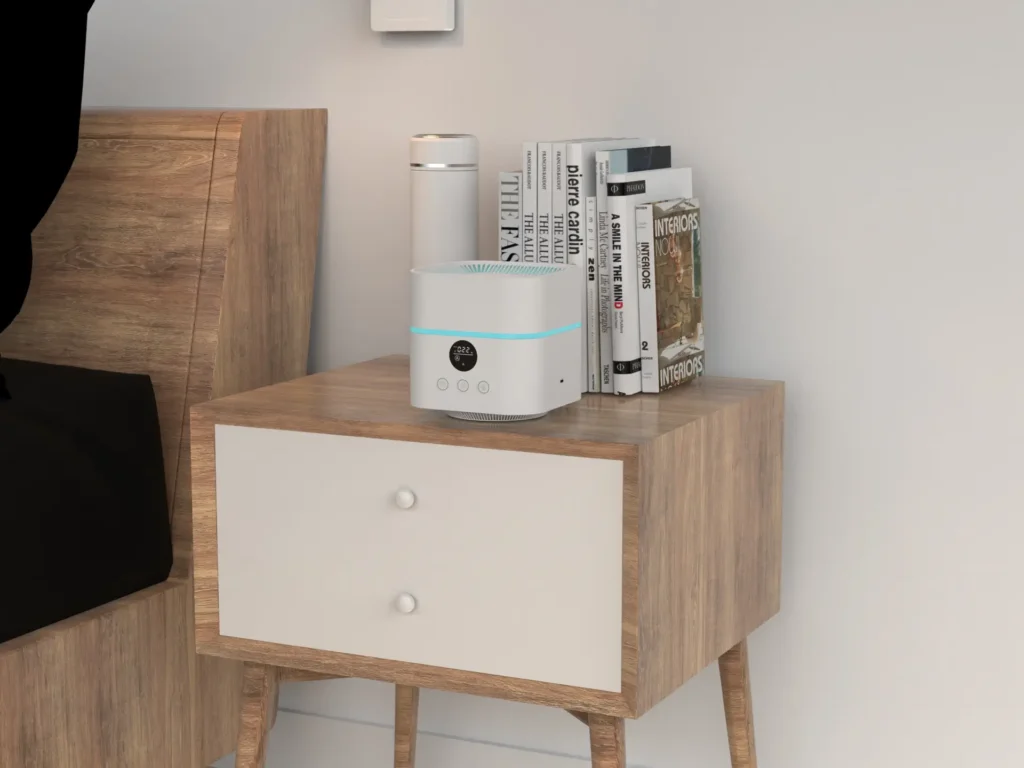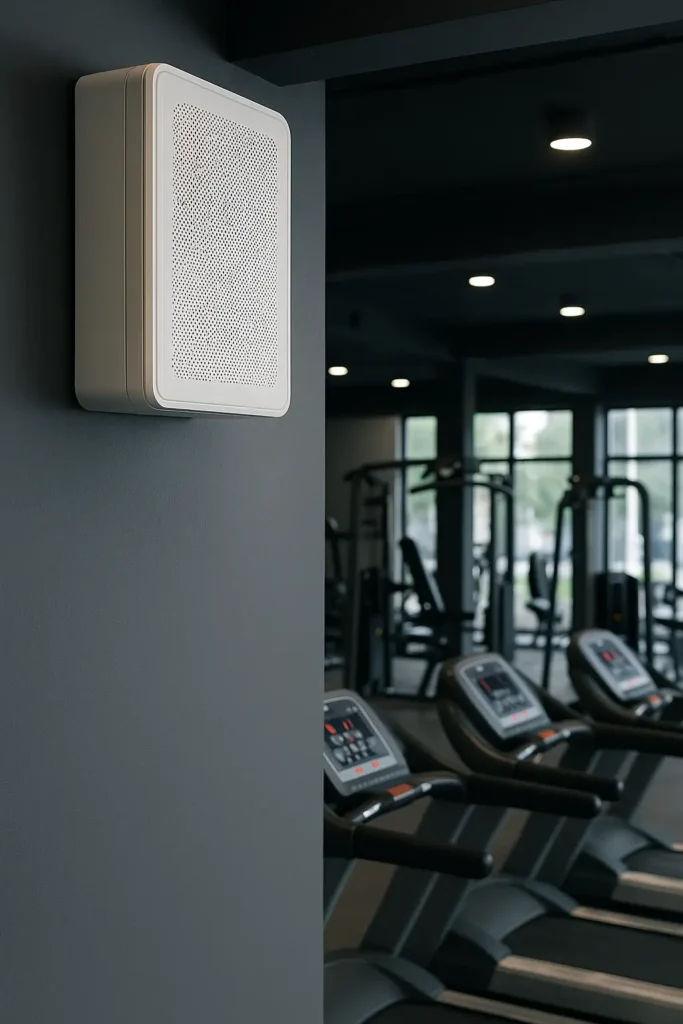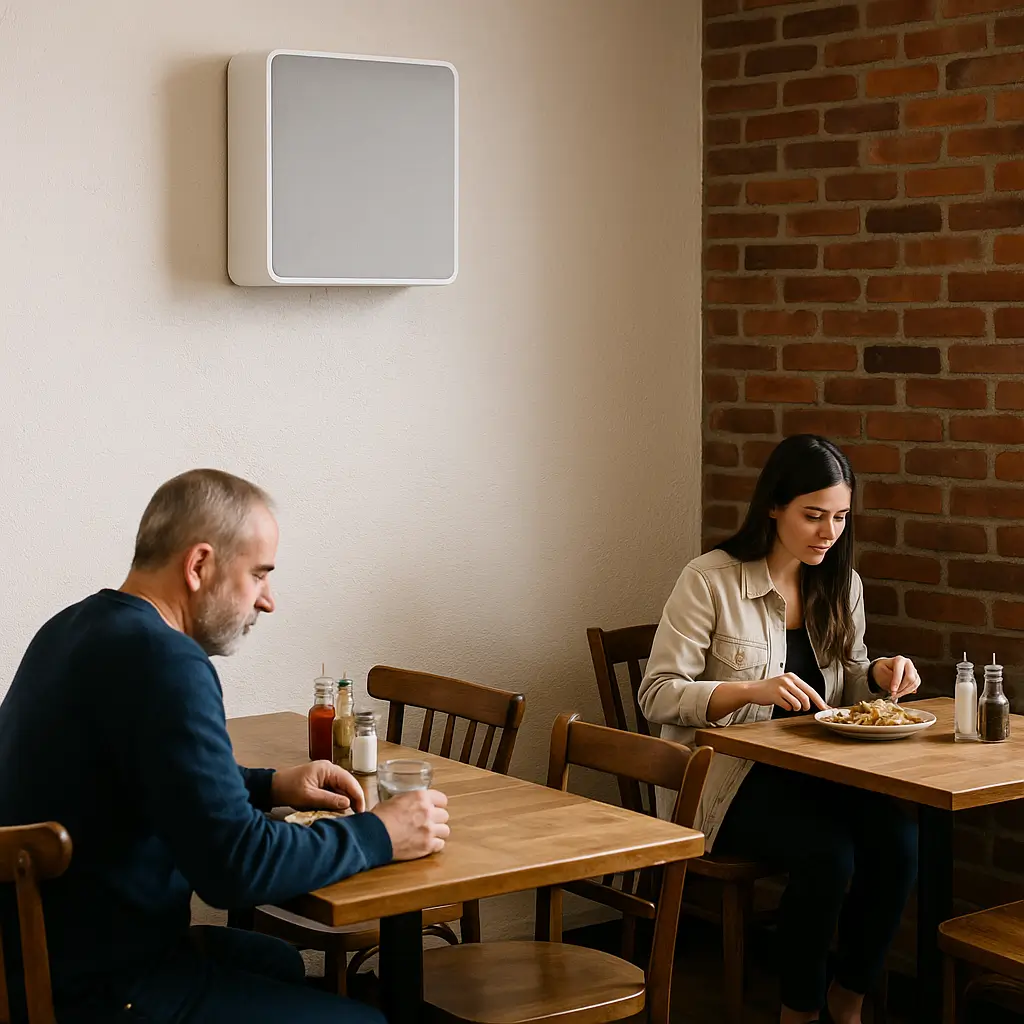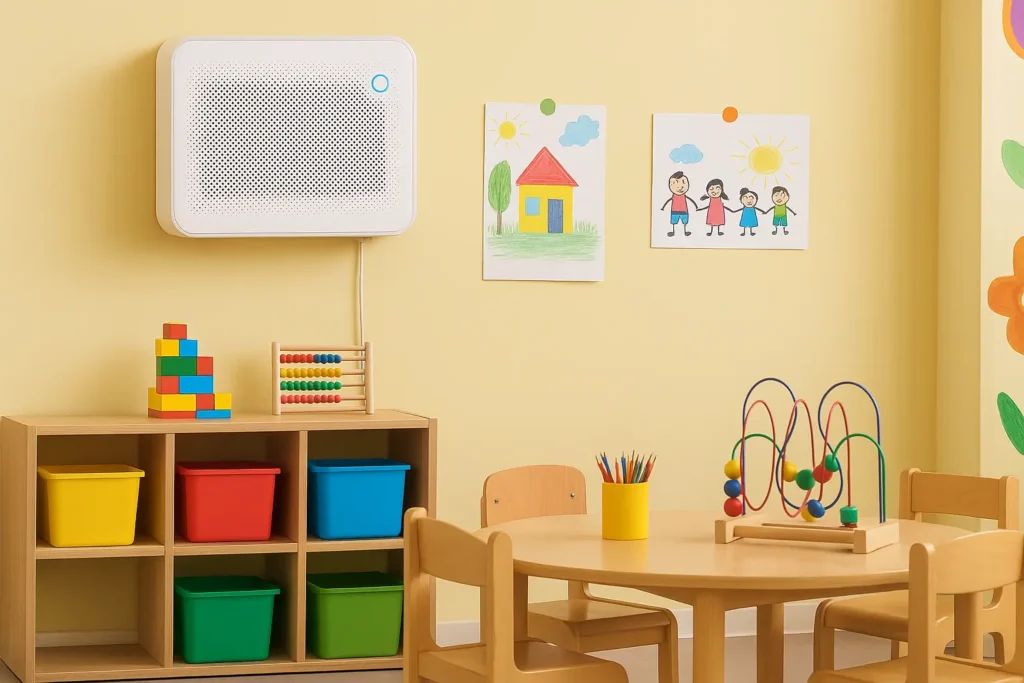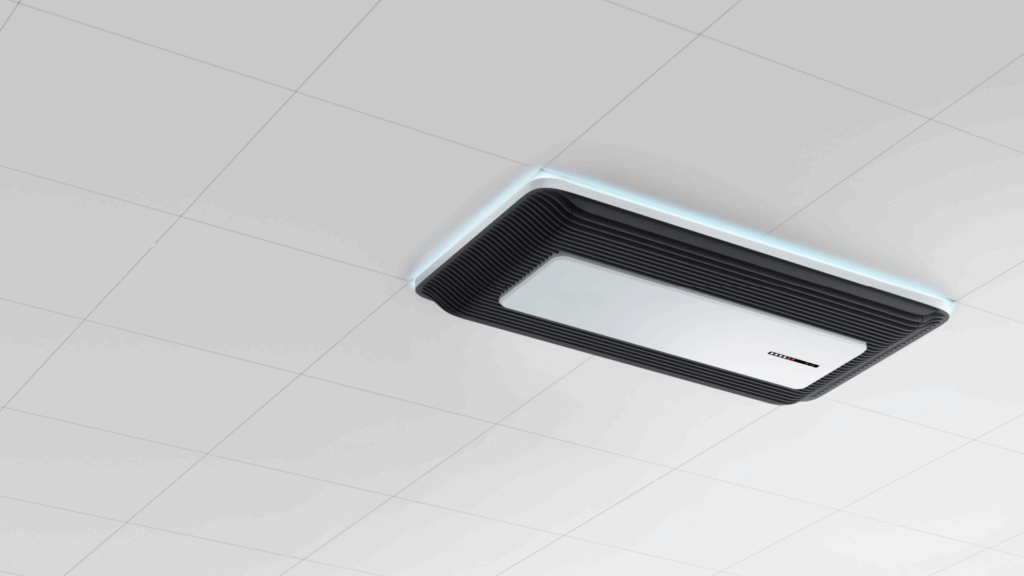カビの胞子は通常の掃除では対処できません。カビ胞子は目には見えず、家の隙間や継ぎ目からカビが生え始めて初めて現れます。カビを適切に除去するには、専門的な方法が必要です。
私たちは皆、カビの胞子を除去することがいかに難しいかを知っている。結局のところ、カビは私たちの家のさまざまな部分、特に手の届きにくい部分で成長するこの非常識な能力を持っています。カビ胞子とは、カビや他の種類の真菌を増殖させる原因となるものです。
評判が良い 空気清浄機メーカー 空気清浄機がこれらのカビの胞子を捕獲できることを確認してください。カビは非常に小さいため、通常の空気清浄機では捕捉できません。しかし同時に、カビがあなたの健康や財産にこれ以上のダメージを与えないように対処することも必要です。
これらのカビの胞子、その原因、そしてどのようにカビを取り除くことができるのか、もっと詳しく知りたい方はこちらをお読みください。
カビの胞子はどこから来るのか?
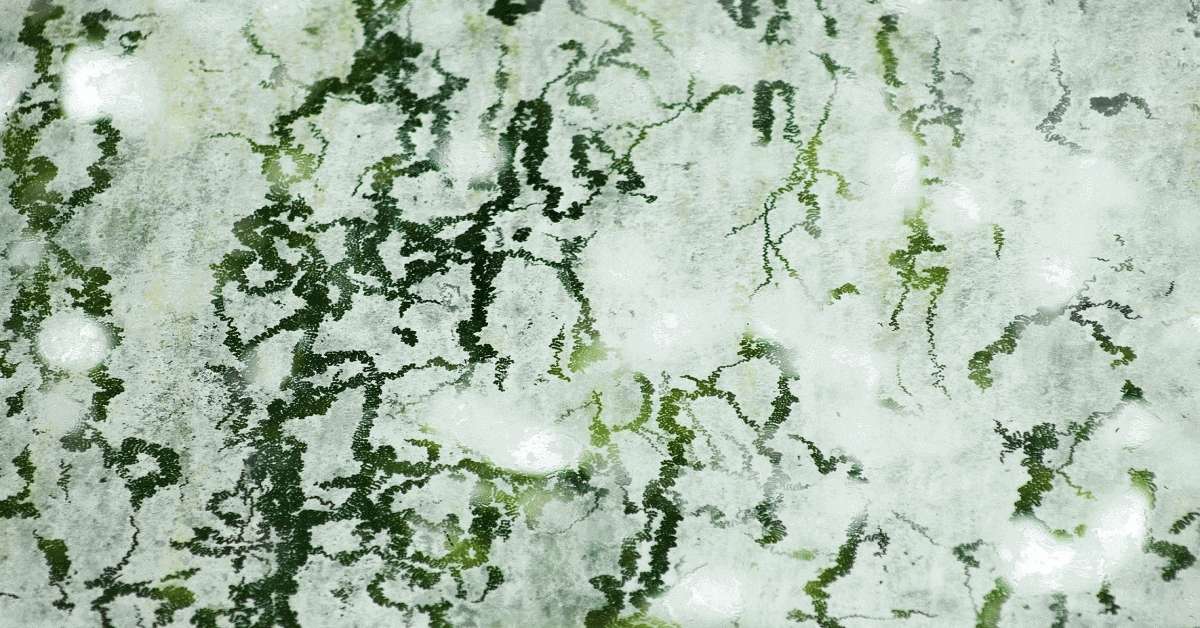
画像ソースアンスプラッシュ
多くの人は、外であろうと家の中であろうと、私たちが胞子に囲まれている可能性が大きいことに気づいていない。カビの胞子の大きさはさまざまだが、微細である可能性が高い。その大きさは3ミクロンから40ミクロンで、肉眼では見ることができない。
カビは自然に発生する 彼らは異常な生物ではない。彼らの仕事はリサイクルである。草木のような腐敗し、死んだ有機物を餌としている。従って、あなたの型の胞子は頻繁に植物の完全な公園、土地および他の区域から得られる。
さらに、これらの胞子は降水量が多いと増殖する傾向がある。つまり、長雨の後にその数が増え始めるのだ。また、湿度の高い場所を好む。
これらの胞子はいったん空気中に飛散すると、やがて定住できる場所を見つける。しかしたいていの場合、胞子は理想的な温度と湿度がある場所でカビを発生させる傾向がある。このような条件が揃えば、胞子は菌糸と呼ばれる糸状の伸長物を作り出す。この胞子が環境中の栄養分を吸収し、カビを成長させるのである。
空気中にカビの胞子があるのは正常か?
前述したように、カビの胞子は空気中に定期的に発生する。ほとんどの場合、カビ胞子は私たちが呼吸する空気中に存在する。しかし、それを吸い込んでも問題は起こらないので、心配する必要はない。
カビの胞子は、死んだり腐ったりした有機物を食べる菌類である。したがって、木や茂みなどの植物がある場所に住んでいる場合、これらのカビの胞子が存在する可能性が高い。同時に、カビは湿度の高い環境を好む。
これらのカビの胞子について心配しなければならない唯一のことは、屋内に存在することである。ひとたびカビが家の中に侵入すれば、カビの蔓延を引き起こすかもしれない。構造的な劣化はもちろんのこと、健康に悪影響を及ぼすこともある。
カビの胞子による副作用とは?
カビの胞子はカビを発生させ、そのカビが家屋にはびこる。カビの胞子に長時間さらされると、呼吸器系の問題を引き起こす可能性がある。しかし、その影響の程度はまだそれほど特定されていない。
しかし同時に、カビに対して他の人よりも敏感な人もいる。カビにさらされると深刻な影響を受ける人たちだ。例えば、喘息持ちの人は、カビがはびこる空間で呼吸をすると、頻繁に発作を経験する。さらに、免疫系が低下している人もカビによる症状を経験することがある。
以下はカビにさらされた場合の症状である:
- 呼吸困難/ゼーゼーする
- 喉の炎症
- 咳
- 皮膚刺激
- 鼻づまり
次のような症状がある場合は、すでにカビが発生している可能性があります。カビが繁殖している可能性のある兆候を見つけるために、敷地内のすべての部屋と内部をチェックする必要があります。
カビの胞子は家のどこで育つのか?

画像ソースアンスプラッシュ
前述のように、あなたの家はこれらのカビの胞子のホットスポットになる可能性があります。しかし、カビがよく発生する場所は以下の通りである:
バスルーム
浴室には水があるため、常にカビが生えやすい。浴室は毎日使う場所である。したがって、そこに水のような残留物が存在することは驚くべきことではない。カビはこのような環境で繁殖しやすい。乾燥させなければ、カビの胞子はやがて増殖する。
キッチン
繰り返しになるが、キッチンはカビの胞子やカビの侵入を免れない。バスルームと同様、キッチンもカビにとっては格好の生息地なのだ。残り物の食べ物からシンクの水まで、これらの事はカビが制御不能に成長するのを促すことができる。したがって、このエリアは常に清潔で乾燥した状態に保つことが推奨されます。
地下室
地下室は常に暗く、湿っていて、暖かい。これらはカビの成長が起こるための前提条件である。一度カビの胞子があなたの家のこの部分に突き通ることができれば、すぐに大規模なカビの成長を期待するべきである。実際、カビの数をコントロールできなければ、地下室の構造に深刻なダメージを与えることになる。これは高価な修理に導く。
なぜカビの胞子浄化が重要なのか?

画像ソースアンスプラッシュ
可能な限り、あなたはあなたの家にカビの胞子がないことを望むでしょう。胞子がカビの蔓延を引き起こす可能性があることはすでに述べた。
カビの胞子は健康問題を引き起こすだけではありません。カビの胞子は健康被害を引き起こすだけでなく、財産に高額な損害を与えることもある。場合によっては、これらのカビを除去することはあまりにも困難であり、それらを根絶するために大規模な改修を促す。簡単な予防策を講じることで、自分の住まいに起こるこれらの望ましくない苦境を避けることができる。
空気清浄機を加えてカビの胞子を取り除く
カビの胞子の存在を抑制する最も効率的な方法の1つは、空気清浄機である。空気清浄機は、空気中のさまざまな浮遊粒子を捕獲するように設計されています。正しい空気清浄機を使えば、カビの胞子や病原菌などの微細な汚染物質にも対処できる。
これらの空気清浄機について詳しく知り、カビの問題にどのように役立つかをご覧ください。
なぜ空気清浄機は室内空気の質を改善するために重要なのか?
室内空気汚染は、最近多くの人が目を背けようとしている問題だ。しかし、この問題を見て見ぬふりをすることはできない。結局のところ、屋内空気汚染の影響は屋外のそれよりも深刻なのだ。
その理由は、室内の空気中の汚染物質の濃度にある。屋外とは異なり、家や建物の中は空気がうまく循環しない。つまり、室内に入ってきた汚染物質はすべて逃げ出すことができないのだ。汚染物質に長時間さらされれば、身体に有害な影響を及ぼすことになる。
With an air purifier, you would be able to "process" the air you breathe inside your living spaces. The device can allow you to breathe fresh and clean air, even if you are residing within a polluted city or suburban space.
カビ胞子用空気清浄機
気になる汚染物質がカビの胞子なら、空気清浄機に頼るべきだろう。空気清浄機は、空気中に浮遊する真菌、カビ、その他の微生物を捕獲するのにも効果的なのだ。
医療グレードのフィルターを備えた空気清浄機など、特殊な空気清浄機は、空間内の目に見えない脅威をろ過することができる。カビの胞子がはびこる場所に設置すれば、その数を大幅に減らすことができるだろう。
カビ胞子用の空気清浄機は安全か?
空気清浄機は、フィルターを使って空気中のさまざまな汚染物質を取り除くだけだ。使用者に害を及ぼす可能性のある他のメカニズムは使用していない。特に評判の高いメーカーが製造したものは、安全に使用できる。
ここで注意しなければならないのは、オゾンガスを発生させる空気清浄機だ。メーカーによれば オゾン空気清浄機 は、空気中のさまざまな汚染物質を中和することができる。コンセプトは理想的だが、オゾンガスにさらされるのは有害である。オゾンガスは一種の肺刺激物質であり、既存の呼吸器疾患を悪化させる可能性がある。
空気清浄機は、フィルターを使用しているものだけを使用することをお勧めします。効果的であることはもちろん、安全に使用することができます。
カビの胞子を除去する空気清浄機の働きとは?
多くの人が、空気清浄機はSFの産物だと思っていた。しかし、これらの空気清浄機は実際に機能するのだ。高度な技術を駆使しているわけでもない。その代わりに、テストされ、試された濾過方法を使っているだけなのだ。
空気清浄機にはいくつかのフィルターが装備されている。これらのフィルターは、空気中のさまざまな種類の汚染物質を選別するものだ。フィルターによっては、空気清浄機がウイルスやバクテリアを捕獲することもできる。
空気清浄機には一般的に3つのフィルターが装備されている。それらは以下の通りである:HEPAフィルター、カーボンフィルター、プレフィルターだ。HEPAフィルターは、カビの胞子のような微細な空気中の汚染物質を捕獲する役割を担っている。一方、カーボンフィルターは、揮発性有機化合物などの化学物質や物質を分解する。プレフィルターは、他のフィルターにダメージを与える可能性のある大きなゴミを捕らえます。
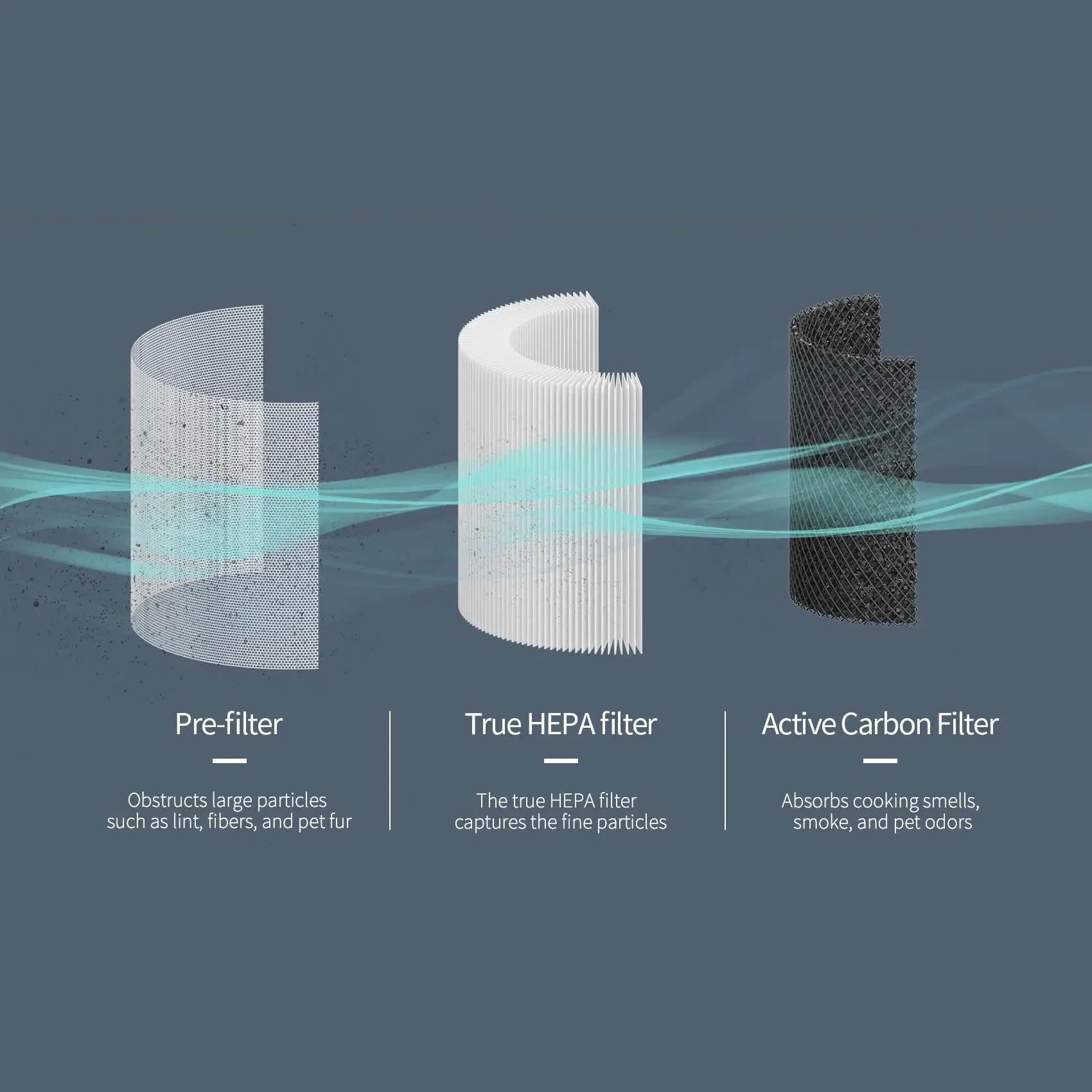
空気清浄機によるカビの胞子の除去:ステップ・バイ・ステップ
標準的なフィルター式空気清浄機の動作はこうだ:
- ファンを使って空気を吸い込む。ファンとモーターの質は、空気清浄機の全体的な性能に影響を与えます。そのため、同じように効率よく静かに作動するものを手に入れるようにしましょう。
- その後、空気は何層ものフィルターを通過する。カビの胞子のような微細な汚染物質のほとんどが捕獲されるのはHEPAフィルターである。空気はまた、臭いの原因となる物質を分解するカーボンフィルターも通過する。
- 一度きれいになった空気は、再び空気中に放出される。このプロセスを繰り返すことで、あなたの家に有害な汚染物質やその他の不要な物質がないことを保証します。
空気清浄機のフィルターは、室内に浮遊する脅威をできるだけ取り除く役割を担っている。そのため、高品質のフィルターを搭載した空気清浄機を選ぶことが非常に重要です。
カビの胞子が定着するまでの期間は?
空気清浄機を使えば、空気中のカビやさまざまな汚染物質の存在を抑えることができる。ただし、空気中の粒子を捕らえる速度は、いくつかの要因に左右される可能性があることに留意してほしい。
ここで問題になるのは、部屋の広さかもしれない。大きな部屋で小さな空気清浄機を使うと、汚染物質をすぐに除去することができません。実際、室内の空気をすべて吸収するのに十分なパワーがないため、装置の効率が悪くなるかもしれない。
適切なサイズの空気清浄機を使用すれば、自宅の室内空気の質は大幅に改善され、より早く改善される。適切な空気清浄機を使用していれば、カビの胞子は素早く除去される。
カビ胞子用空気清浄機を購入する際の注意点
カビの胞子に対応できる空気清浄機が欲しいなら、以下の要素を考慮する必要がある。これらは、空気清浄機が広範なろ過が可能であることを保証できるものである。
- HEPAフィルター - 空気清浄機といえば、HEPAフィルターは必需品だ。これは、空気中の微細な汚染物質を捕捉できるフィルターである。国際基準に基づくと、これらのHEPAフィルターは、0.3ミクロンという微細な空気中の汚染物質を99.9パーセント捕捉できなければならない。これはカビや真菌が存在するスケールである。
- カバレッジ - 空気清浄機を購入する前に、設置する部屋の広さを確認してください。寸法がわかったら、同等以上のカバー範囲を持つ空気清浄機を探します。例えば、部屋の広さが100平方フィートであれば、100フィート以上の有効範囲を持つ空気清浄機を購入する必要がある。
- 気流 - 空気清浄機の性能における気流の重要性を軽視してはならない。空気清浄機が空気中に存在する汚染物質をできるだけ多く捕獲できるようにするものだからだ。空気清浄機のファンとモーターは、長時間でも適切に機能する必要があります。
- ファンスピード - ニーズに応じて、空気清浄機には調節可能なファンスピードが必要だ。こうすることで、空気の質の変化に対応することができます。さらに、空気清浄機を常時稼働させたい場合は特に、低速設定での稼働が可能であることも必要でしょう。
除去後のカビの胞子を防ぐには?
一度カビの胞子に対処したら、もう遭遇する必要がないことを確認する時です。これらのカビの胞子が引き起こす症状に対処することは非常に困難である。
その一つの方法は、室内空間の相対湿度を低く保つことである。具体的には、カビの繁殖を防ぐために50%を超えてはならない。そのためには除湿機が必要です。エアコンも室内の湿度を調整するのに役立ちますが、除湿機が最適です。
カビの胞子を防ぐもう一つの方法は、家の配管、屋根、壁の雨漏りを直すことです。こうすれば、カビの胞子が侵入したり増殖したりする機会はなくなる。
もちろん、家の中に十分な換気があることも忘れてはならない。換気扇があれば、室内の空気を外に排出することができる。これらの換気口はバスルームやキッチンには欠かせない。
空気中のカビ胞子を除去する4つの解決策
カビの胞子除去のために試すことができる他の方法がまだある。あなたが望む理想的な結果を得ることを確実にするために、あなたもそれらを試してみてください。
カビキラー製品を使う
現在、カビやカビの胞子を殺すことができる洗浄剤が販売されています。バスルーム、キッチン、地下室など、家の数カ所にカビの繁殖の兆候が見られる場合は、すぐにこれらのカビを殺す製品を使用してください。
これらの洗浄剤の最も優れた点は、カビが以前繁殖した場所に再びカビが付着するのを防ぐことができることだ。そのため、室内空間の導通を妨げることもないはずだ。
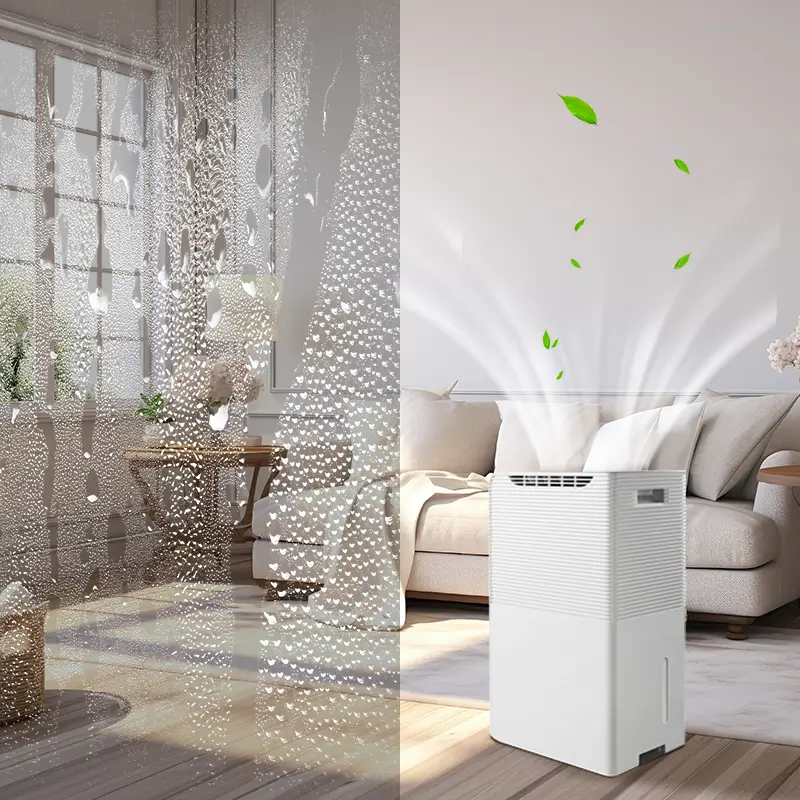
除湿機の追加
A 除湿機 は、室内の余分な湿気を取り除く装置だ。空気中の水分を吸収し、タンクに貯蔵する。室内の湿度が高すぎると、カビの胞子が発生しやすくなる。
家の湿度を調節すれば、カビやその他の菌類の繁殖を防ぐことができる。これらの生物は、半温度の湿った場所に避難することを好む。したがって、除湿機は浴室や台所など、湿度が高くなりやすい場所に設置する必要がある。
換気の改善
Another method that you should try is enhancing the ventilation in areas that are susceptible to mold growth. The idea for this method is simple: you want the "bad" air to leave your home while allowing the "good" ones to enter.
その方法のひとつが、1日に30分でも家の窓を開けることだ。もうひとつは、開けた窓の近くに扇風機を置くことだ。こうすることで、外の空気を送ることができる。
横方向の換気も有効だ。窓と反対側の室内ドアを開ける。また、窓を閉めている場合は、シーリングファンやエアコンをつけておくこと。
プロを呼ぶ
問題が想像以上に深刻な場合もある。DIYでは対処できないほど深刻な場合もあります。専門家はあなたの区域のカビの胞子の成長のトラブルシューティングが可能である原因を突き止め、それらに必要な解決策を提供する。
確かに、これには時間とお金がかかる。しかし、これらの専門家は、あなたのカビの胞子の問題が消えることを確認します。彼らはまた、同じ恐ろしい問題が再び起こらないようにするためにあなたがすることができます他のものについての勧告を提供します。
結論
ここでは、カビの胞子に対処するための最良の解決策をすべてリストアップした。その中で、空気清浄機の使用が最も効果的で効果的であることは否定できない。これらの装置は、カビの胞子やアレルゲンなどの微細な汚染物質を捕捉することができるため、最も重要な結果をもたらします。
空気清浄機に関しては、信頼できるものだけを信用すればよい。そのため、ヒソエアのような評判の高い空気清浄機メーカー製のものを求めるべきです。HisoAirは、住宅用、商業用、工業用に適した医療グレードの空気清浄機を製造する著名なメーカーです。 訪問 ヒソエア をご覧ください。


